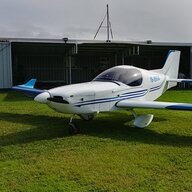-
Posts
4,794 -
Joined
-
Last visited
-
Days Won
139

kgwilson replied to onetrack's topic in Aircraft Incidents and Accidents

kgwilson replied to Kyle Communications's topic in AUS/NZ General Discussion

kgwilson replied to Kyle Communications's topic in AUS/NZ General Discussion

kgwilson replied to Kyle Communications's topic in AUS/NZ General Discussion

kgwilson replied to Kyle Communications's topic in AUS/NZ General Discussion

kgwilson replied to Geoff_H's topic in Aircraft General Discussion

kgwilson replied to Geoff_H's topic in Aircraft General Discussion

kgwilson replied to red750's topic in Aircraft Incidents and Accidents

kgwilson replied to Geoff_H's topic in Aircraft General Discussion

kgwilson replied to red750's topic in Aircraft Incidents and Accidents

kgwilson replied to red750's topic in Aircraft Incidents and Accidents

kgwilson replied to red750's topic in Aircraft Incidents and Accidents

kgwilson replied to red750's topic in Aircraft Incidents and Accidents

